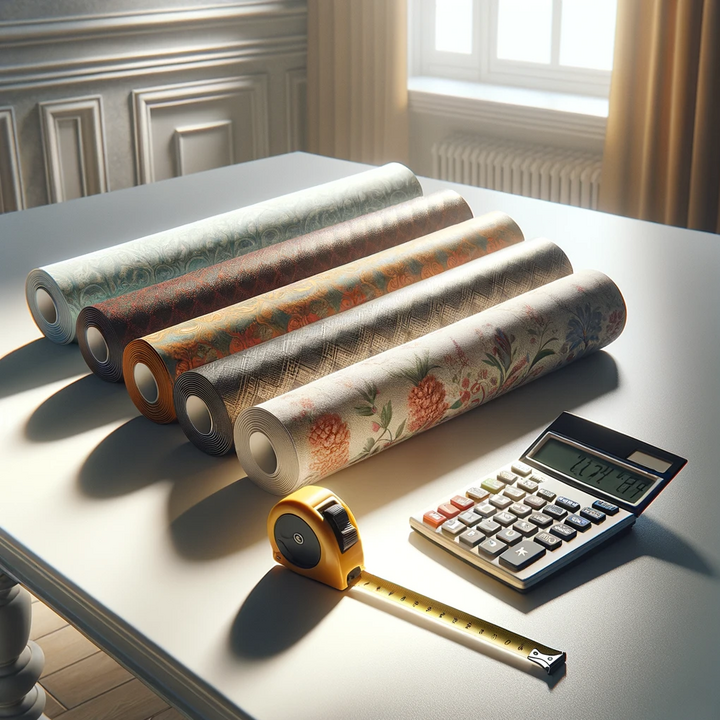
Wall murals can transform a room, adding depth, character, and beauty to any space. But the question remains: how much wall mural do I need? Whether you're a first-time mural enthusiast or someone looking to redecorate, determining the right amount of mural is essential. This article provides you with a comprehensive guide on measuring your walls accurately and choosing the best calculation method suited to your needs. Finally, we'll share some do’s and don'ts to ensure your wall mural installation process goes smoothly.
Laying the groundwork: Measurements and methods
You must grasp two fundamental aspects to know how much wall mural you need. Firstly, the accurate measurement of your walls; with this, you avoid over-purchasing or falling short on your mural material. Secondly, the calculation methods so you can pick what’s best for your needs. Hence, we’ll break down these two vital components into two comprehensive parts: (1) How to measure your walls and (2) What are the wall mural wallpaper calculation techniques?
Part 1: How to measure your walls
The first thing you need to learn is how to measure your walls. From regular straight walls to those with intricate designs, this guide breaks down the process of gauging their dimensions. Knowing the precise measurements ensures you'll have an adequate supply of wall mural material, eliminating guesswork and potential mishaps.
How to measure plain, straight walls
Begin by determining your wall's maximum horizontal width and the greatest vertical height. Since walls can sometimes have irregularities, adding an extra 6-10 cm is wise. For exceptionally wide or tall walls — those exceeding 600 cm in width or 350 cm in height — a margin of at least 10 cm is recommended.
How to measure angled and staircase walls
Both walls with angles and those beside staircases require a similar approach. Identify the farthest width and height, then integrate an additional 6-10 cm for optimal fitting. Since wall murals are typically rectangular, custom trimming is often required to accommodate angles or slopes. Photowall’s customer service can help you visualize which areas would be trimmed.
How to measure walls with interruptions
Whether it's a window or a door punctuating your wall, measure the entire wall's dimensions. Once you receive your wall mural, the sections covering these openings must be clipped. Should you be uncertain about the parts to adjust, specialized measuring tools or support teams, such as Photowall's, can be invaluable.
Multiple-plane spaces
For rooms with several walls needing wall murals, record individual dimensions. Sum up the total widths for a cumulative measure. Adding a 10-15 cm buffer to the collective dimensions is recommended to achieve a cohesive look.
Part 2: What are the wall mural calculation techniques?
After securing your wall’s measurements, the next logical step in your journey is to delve into the calculation methods. Remember, your meticulous measurement process wasn't just a preliminary task; it forms the foundation of this next phase. The measurements are key input data for these techniques, ensuring you get a precise estimate of your wall mural needs. Here are the calculation techniques you can use:
Square footage method: Determining wall mural requirements based on area
The square footage method is about calculating the total surface area of your walls to ascertain the amount of wall mural required. Let's explore this method in detail.
1. Calculate the area: Using your pre-measured height and width for each wall, determine its square footage by multiplying the two values together. Sum up each wall's square footage for multiple walls to get your total area.
2. Adjust for openings: If you've decided against wallpapering over doors and windows, deduct their area from your total. Standard sizes can be approximately 21 sq. ft. for doors and 12 sq. ft. for standard windows. However, if you've measured these openings, use your specific values for more accuracy.
3. Factor in additional wall mural: To cater for mistakes, pattern matching, or future touch-ups, add an extra 15% to your total square footage. This ensures you have a little extra material on hand if needed.
4. Check the wall mural specifications: Different wall murals have varying square footage per roll. Use your calculated requirements and compare them to the product details, ensuring you order the appropriate number of rolls.
Roll dimensions: How many rolls of wall murals do I need?
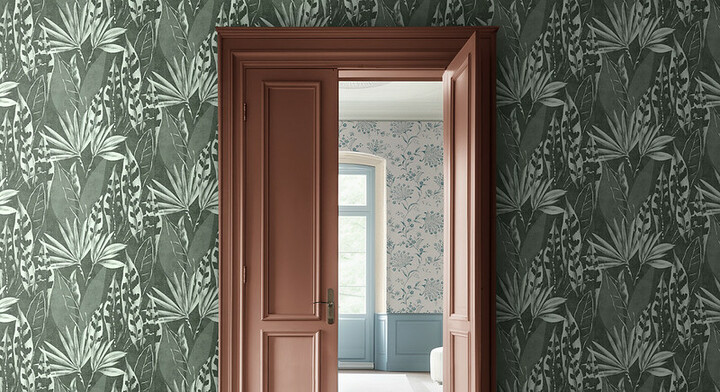
Using this method, you'll focus on the dimensions of a single wall mural roll and compare them to the total area of your walls.
1. Determine roll coverage: Check the product label or specifications to identify how much area a single roll can cover. A standard wall mural roll typically covers about 25 to 30 square feet, but this can vary based on the manufacturer and design.
2. Calculate the total area needed: From your measurements (which we assume you have based on the previous sections), sum up the square footage of all walls to be covered.
3. Divide total area by roll coverage: To determine the number of wallpaper rolls required, simply divide your total wall area by the coverage provided by a single roll. For example, if the combined area of your walls is 250 square feet and a roll covers 25 square feet, dividing 250 by 25 gives 10. Hence, you would need 10 rolls.
4. Factor in extra rolls: Buying an extra roll for potential mistakes, pattern mismatches, or future repairs is wise. So, if your calculation suggests 10 rolls, consider purchasing 11.
5. Rounding up: Always round up to the nearest whole number when determining the number of rolls. If your calculation suggests you need 10.5 rolls, you'd purchase 11 rolls.
Pattern repeat: Calculating needs based on design continuity
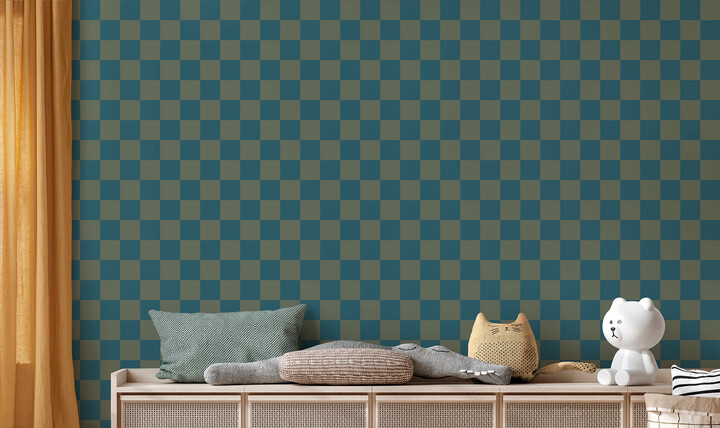
The repetition of a design, known as the pattern repeat, impacts the amount of wall mural you need. Here's how to determine your requirements when dealing with patterned wall murals:
1. Understand the pattern repeat: Before delving into calculations, understand the pattern repeat, which is the vertical distance between where the pattern is identical again (repeats). This distance can be small or large, depending on the design.
2. Check the label: Most wallpaper rolls provide information about the pattern repeat on the label. This information is critical, as it tells you how often the pattern repeats vertically.
3. Calculate extra length: For every drop (a vertical piece of wall mural), you might need to add extra length to match the patterns. This means that if the pattern repeat is 10 inches, you might have to leave an extra 10 inches on each drop to ensure patterns match the width of the wall.
4. Determine the total drops needed: Divide the wall width by the roll width to get the number of drops required for your wall.
5. Calculate the total length for each drop: Add your wall height and the extra length required for pattern matching. For instance, if your wall height is 100 inches and the pattern repeat is 10 inches, each drop should be 110 inches.
6. Calculate the total wallpaper required: Multiply the total length for each drop by the number of drops you need. Using the previous example, if you need 4 drops, your total requirement would be 440 inches.
7. Convert to rolls: Using the total length of the wall mural roll (typically given in the product details), determine the number of rolls needed. Divide the total wall mural length requirement (from step 6) by the length of one roll.
Linear method: Assessing wall mural requirements by length
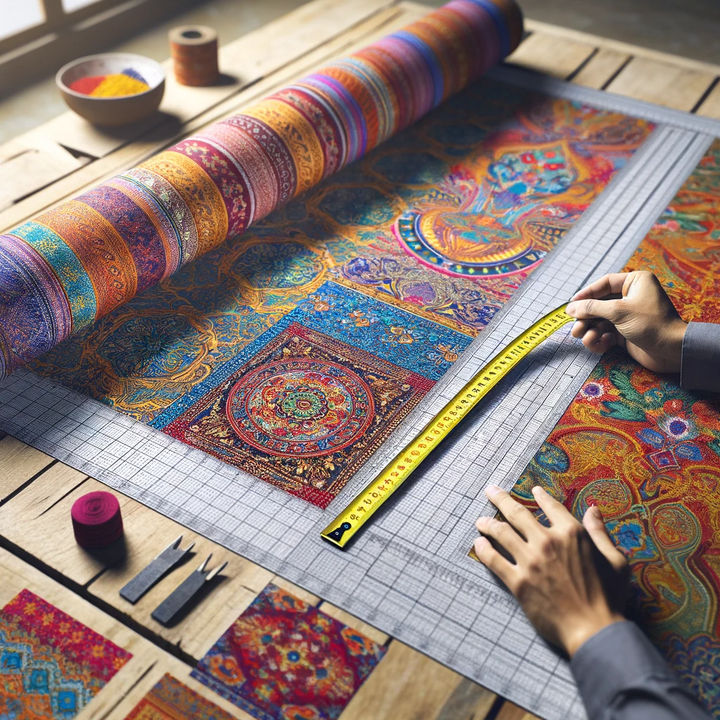
The linear method is for those with wall murals sold by the linear foot or meter instead of the roll or square footage.
1. Understand the wall mural width: Get details on the width of the wall mural. Typically, standard wall murals are about 53 cm or 21 inches wide, but this can vary.
2. Determine the total drops required: With your wall measurements in hand, divide the total width of your wall by the width of the wall mural. This will give you the total number of drops (vertical lengths of wall mural) you need.
3. Determine the length of each drop: Since this method is length-based, each drop's length will be the same as your wall's height. But remember to add a bit of extra length for trimming at the top and bottom.
4. Calculate the total linear length required: Multiply the length of each drop (from Step 3) by the number of drops needed (from Step 2). This will give you the total length of wall mural you need. For instance, if each drop's length is 2.5 meters and you need 4 drops, you'll require 10 meters. Always round up to ensure you have enough.
Photowall technique: The simplified approach to wall mural calculation
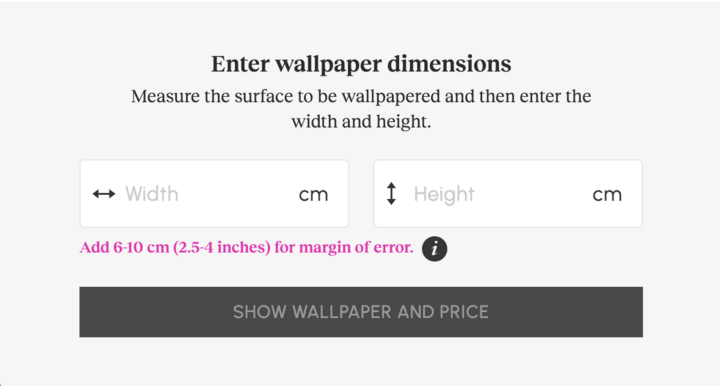
Photowall simplifies everything. Forget the hassles of rounding, multiplying, dealing with pattern repeats, and adjusting for openings found in traditional methods. Just measure your wall, and Photowall does the rest. Here’s the easiest way you can calculate your wall mural needs:
1. Choose your design: Dive into a vast collection of wall mural motifs available on Photowall.
2. Input wall dimensions: Measure your walls and pop those numbers in. We'll delve deeper into accurate measuring later on.
3. Adjust your design: Click, drag, and position your chosen motif to capture the perfect visual.
You can determine exactly how much wall mural you'll need with just a few simple steps. But the ease doesn't stop there. Once you've made your choices, Photowall sends you sequentially labeled strips tailored for your walls. This means no confusion during installation— every piece flows seamlessly into the next, ensuring design continuity and a hassle-free experience.
After ordering your wall mural perfectly measured for your walls, you can learn how to install it here: how to install wall mural
Do's and don'ts when calculating wall mural needs
Embarking on a wallpapering project can be exciting, but ensuring the right amount of wallpaper is crucial for its success. Following a few best practices and avoiding common pitfalls can ensure a seamless process from start to finish.
Do's
• Always use a reliable measuring tape or tool for accurate measurements.
• Include a 6-10 cm mounting margin as a standard. However, consider increasing this margin for larger walls to ensure you have enough wall murals to cover edge inconsistencies.
• Unless you’re using the Photowall method, ordering a little extra rolls for patterned wall murals is wise. The additional amount will help accommodate any pattern mismatches or mistakes during installation.
• Order all your wall murals in one batch. This ensures consistency, as patterns are easier to match when they come from the same production batch.
• Keep a record of your measurements and calculations to refer back to if needed.
Don'ts
• Refrain from estimating or guessing your wall measurements; always measure.
• Avoid cutting your wall mural too soon. Wait until you're ready to apply to make the final cuts.
• Remember to account for windows, doors, and other openings when calculating your wall mural needs.
• Resist the temptation to order the exact amount. It's always better to have a little extra than to run short.
• Don't mix and match wall murals from different batches, as there might be slight variations in color or pattern.
In conclusion, precision and foresight are paramount when planning your wallpapering project. Whether you're a novice or a seasoned DIY enthusiast, always remember to measure twice, order once, and enjoy the fruits of your labor.
Wondering how much wall mural costs? Other factors affect the price besides the amount of wall mural material needed. Every element that needs to be considered is here: how much does wall mural cost?
 Australia
Australia
 Austria
Austria
 Belgium (Dutch)
Belgium (Dutch)
 Canada (English)
Canada (English)
 Denmark
Denmark
 Estonia
Estonia
 Finland
Finland
 France
France
 Germany
Germany
 Ireland
Ireland
 Italy
Italy
 Luxembourg (French)
Luxembourg (French)
 Netherlands
Netherlands
 New Zealand
New Zealand
 Norway
Norway
 Poland
Poland
 Portugal
Portugal
 Romania
Romania
 Singapore
Singapore
 Spain
Spain
 Sweden
Sweden
 Switzerland (French)
Switzerland (French)
 USA
USA
 United Kingdom
United Kingdom
 Other Countries
Other Countries




